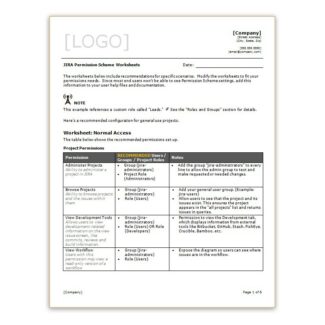The first time I converted a paper form to an online form, I made my online form a perfect replica of its predecessor. I figured the team I was building the form for would appreciate my being faithful to their original and I wanted them to feel reassured that the transition to digital did not mean they had to abandon their processes.
Later I learned that there are several reasons you shouldn’t do that:
- The form may not have been well designed in the first place.
- Processes may have changed since the form was last updated.
- Online forms allow us to use functionality that isn’t available for paper or PDF forms. We can make forms that are better for both the team that owns the form, and their customers/users.
Where to Start When Converting to Jira Forms/Screens
Instead of copying, gather the stakeholders and start from a blank slate. There are several things you should consider before creating your form:
- Define the user
Who is the customer/user who will be filling out the form? What are they trying to achieve? Is there information that you’ll be asking for that the customer may not know how to find? Or information that they may not want to provide? Are there parts of the current form that customers frequently get wrong? What do you know about your users language level (Are you creating the form in their native language? Are you using technical terms or jargon they may not be familiar with?) - Decide what information you need to collect
List the data points that need to be collected. Be willing to challenge the status quo. Since one of the principles of well-designed forms is minimalism, put every element (section, question, instruction) on trial for its life. If no one can justify why the data is needed, then ditch the question. - Note which data points need to be collected from which users
There’s a good chance that you don’t need to ask every user every question. Note which questions are associated with certain scenarios. You’ll use this information later to make some questions conditional, thereby making the form shorter and easier for users. - Decide when and where to place instructions
Large blocks of text are annoying and often ignored by users. Move as much instruction as possible to the field level. - Identify validation and formatting needs
Get clarity on what’s required and what’s optional. Find out if there are any business rules (choice options, spending limits, etc.) that should be built into the form. Also, find out if there are preferred formats for text fields. Consider whether any of the fields should have a default value. - Isolate the data points that will be queried/reported on
While you’re still with the form’s stakeholders, find out which of the information points identified in step 2 will be used in queries and reports. Many data points are collected in order to provide a service, but are never queried. Sorting your data points into to camps will help you select the right field types and keep from creating unnecessary Jira custom fields. - Locate the form in the business process
Where does the form fit in the workflow? Are there circumstance where the form should be automatically added to the issue? What should happen once the form is submitted? Is the form part of a compliance strategy?
Create Your Form/Screen in Jira
Now you’re ready to create you screen/form. Remember to:
- Follow the rules of layout and flow to create a user-friendly form.
- Avoid creating new Jira custom fields unless absolutely necessary.
Be judicious about creating new Jira custom fields. An over-abundance of custom fields makes your Jira configuration complex and will eventually degrade Jira performance. A new custom fields should not be created unless it:- Can be used by multiple projects
- Will be queried and reported on
- Does not duplicate Jira functionality or an existing custom field
Try to use other options such as a ProForma field, a field configuration, or a field context.
- Make the most of the functionality offered by online forms.
- Use conditional logic to ensure that users only see relevant questions
- Build in validation and formatting to ensure clean, complete data
- Use automation (either JSD’s or ProForma’s) to integrate the form into the larger workflow
- Use conditional logic to ensure that users only see relevant questions
By engaging in a careful discovery process and employing the rules of good form design, you can help teams maximize usability and efficiency as they bring their processes into Jira.
Other articles in this series:
- Why Form Design in Jira Matters – How you design your forms will impact the quality of data you receive, and much more!
- Layout and Flow: Creating User-Friendly Forms in Jira – Form layout affects completion rates and user frustration. We’ll discuss the right way to do it.
- Writing Good Form Questions in Jira: Part 1 – How do you choose the right words, field types and validation levels? This article will dig into the nitty gritty of creating good form questions.
- Writing Good Form Questions in Jira: Part 2 – Choice questions are great for collecting structured data. We’ll look at the options for choice questions and discuss ways to influence, or mitigated influence on the user.
- Things to think about when converting forms in Jira – Bringing a process into Jira for the first time? Don’t just copy forms straight across. This is a chance to make improvements.
- Efficient Jira Screens and Jira Service Desk Request Forms – Jira screens and JSD request forms aren’t the same. Here’s how you can make each one work for its audience.
- Tips for Creating good forms/screens in Jira – Learn how you can leverage Jira features like tabs, workflow transitions and icons to create better forms and screens.

